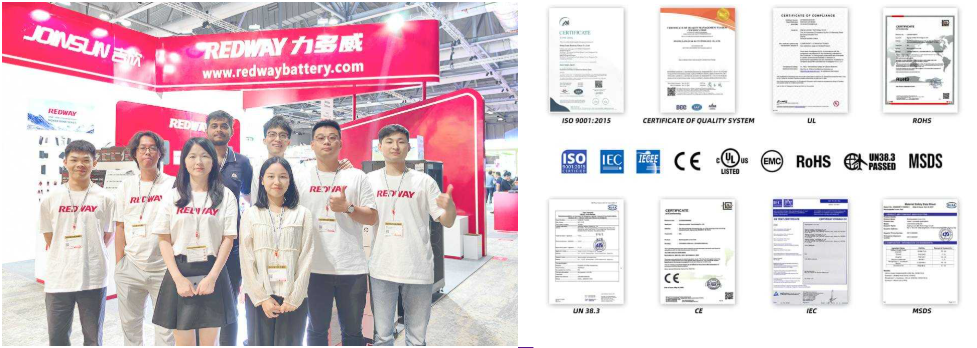Regular maintenance practices for LiFePO4 batteries include proper charging techniques, appropriate storage conditions, monitoring temperature ranges, and managing discharge levels. By adhering to these practices, users can significantly extend battery life while ensuring optimal performance throughout its operational lifespan.
How to Maintain Your LiFePO4 Battery?
To maintain your LiFePO4 battery effectively, regularly check its state of charge (SoC) and ensure it is kept within optimal limits. Perform visual inspections for any signs of wear or damage, and keep connections clean from corrosion or dirt. Regular monitoring helps identify potential issues early.
Chart: Basic Maintenance Checklist
Wholesale lithium golf cart batteries with 10-year life? Check here.
| Task | Frequency |
|---|---|
| Check State of Charge | Weekly |
| Inspect Connections | Monthly |
| Clean Terminals | Every 3 months |
| Monitor Performance | Quarterly |
What Are the Charging Practices for LiFePO4 Batteries?
Charging practices are crucial for the longevity of LiFePO4 batteries. Always use a charger designed specifically for lithium iron phosphate chemistry. Avoid overcharging by following manufacturer guidelines regarding voltage limits. Ideally, charge the battery when it reaches around 20% SoC to maintain optimal health.
Chart: Recommended Charging Practices
Want OEM lithium forklift batteries at wholesale prices? Check here.
| Practice | Description |
|---|---|
| Use Manufacturer’s Charger | Ensure compatibility with battery chemistry. |
| Charge Before 20% SoC | Prevent deep discharge that can harm the battery. |
| Monitor Charge Voltage | Keep within recommended voltage limits. |
How Should You Store Your LiFePO4 Batteries?
When storing your LiFePO4 batteries, charge them to approximately 50% capacity before storage. Keep them in a cool, dry place away from direct sunlight and moisture. Periodically check their state of charge during storage, recharging if necessary to avoid deep discharge.
Chart: Storage Guidelines
| Storage Factor | Description |
|---|---|
| Charge Level | Store between 40% and 60% capacity. |
| Environment | Keep in a cool, dry area away from sunlight. |
| Check State of Charge | Inspect every few months; recharge if below 40%. |
What Temperature Considerations Are Important?
LiFePO4 batteries perform optimally between 15°C and 25°C (59°F to 77°F). Avoid exposing them to extreme temperatures as high heat can accelerate degradation while cold temperatures can reduce capacity. Insulating the battery during extreme weather can help maintain performance.
Know More:
What Regular Maintenance Practices Are Necessary for LiFePO4 Batteries?
How to Troubleshoot Common Issues with RV Lithium Batteries?
What Indicators Should You Monitor to Ensure Battery Health?
How Do You Handle Overcharging and Over-discharging?
To prevent overcharging, utilize a quality battery management system (BMS) that automatically disconnects the charger once fully charged. For over-discharging, monitor SoC closely; avoid discharging below 20% capacity to prevent damage that could shorten battery lifespan.Chart: Handling Overcharging/Over-discharging
| Issue | Solution |
|---|---|
| Overcharging | Use a BMS that disconnects when fully charged. |
| Over-discharging | Recharge before reaching critical low levels (20%). |
What Are the Signs of a Failing LiFePO4 Battery?
Signs of a failing LiFePO4 battery include decreased capacity (not holding charge), unusual swelling or leakage, excessive heat during charging or discharging, or an inability to reach full charge. If any of these symptoms are observed, consult a professional for assessment.
How Can You Optimize Battery Performance Over Time?
To optimize performance over time, implement regular maintenance checks, avoid extreme temperatures during operation and storage, use appropriate charging equipment, and adhere strictly to manufacturer guidelines regarding usage patterns. These practices will help maintain efficiency and prolong lifespan.
What Tools Are Recommended for Battery Maintenance?
Essential tools for maintaining your LiFePO4 batteries include a multimeter for checking voltage levels, cleaning supplies like soft cloths or brushes for terminals, appropriate chargers designed for lithium batteries, and safety gear such as gloves and goggles during inspections.
Expert Views
“Regular maintenance is key to maximizing the lifespan of your LiFePO4 batteries,” says an expert from Redway. “By following proper charging protocols and keeping an eye on environmental conditions, users can ensure their batteries operate efficiently while avoiding common pitfalls.”
Conclusion
Regular maintenance practices are essential for ensuring the longevity and optimal performance of your LiFePO4 batteries. By adhering to recommended charging techniques, proper storage conditions, temperature management, and routine inspections, you can significantly enhance your battery’s lifespan while enjoying reliable energy solutions.
FAQ Section
- What are the key maintenance practices for LiFePO4 batteries?
Key practices include monitoring state of charge regularly, using appropriate chargers, keeping connections clean, storing at optimal charge levels, and avoiding extreme temperatures. - How often should I check my LiFePO4 battery’s state of charge?
It is advisable to check the state of charge weekly to ensure it remains within optimal limits. - Can I fully discharge my LiFePO4 battery?
While you can fully discharge a LiFePO4 battery occasionally, it is best practice to recharge before reaching below 20% capacity to maintain health.





